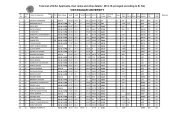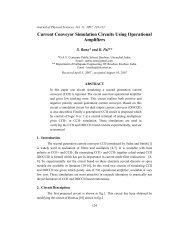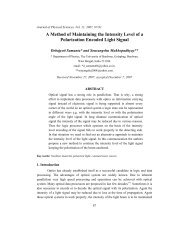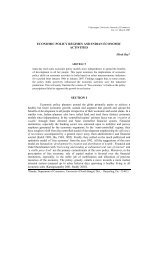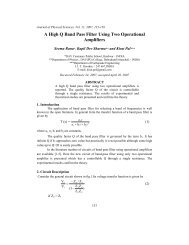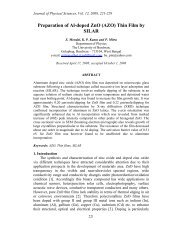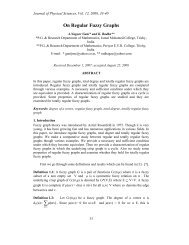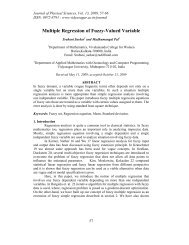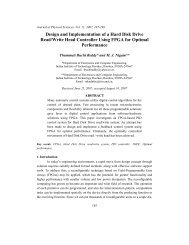VIDYASAGAR UNIVERSITY JOURNAL OF COMMERCE
VIDYASAGAR UNIVERSITY JOURNAL OF COMMERCE
VIDYASAGAR UNIVERSITY JOURNAL OF COMMERCE
Create successful ePaper yourself
Turn your PDF publications into a flip-book with our unique Google optimized e-Paper software.
Vijay Kumar Mishra<br />
Table-5: Growth in Different Sectors<br />
Ninth Plan Tenth Plan<br />
(1997-2002) (2002-2007)<br />
Eleventh Plan*<br />
(2007-2012)<br />
GDP growth (%) of which 5.5 7.0 9.0<br />
Agriculture 2.0 1.8 4.1<br />
Industry 4.6 8.0 10.5<br />
Services 8.1 8.9 9.9<br />
* Target<br />
Source: Approach Paper to 11 th Five year Plan, Planning Commission, GOI<br />
The eleventh plan draft talks about the faster and more inclusive growth agenda. The<br />
inclusive growth cannot be experienced if the farm sector is not revived. The growth of<br />
agriculture sector was not encouraging during the ninth and the tenth plans. The above table<br />
(Table-5) highlights the fact in statistical terms. The eleventh plan has chosen a 4 % annual<br />
growth target for agriculture sector. If the 4 % growth target is realized, a 9 % GDP could<br />
become the reality. The eleventh plan is giving its prime priority to the growth of the farm<br />
sector. The growth target of the eleventh plan appears to be challenging, keeping in view the<br />
past performance of the sector. During the ninth and tenth plans, the growth of the sector<br />
was just around 2 % and the eleventh plan document is targeting a 4 % growth of the sector.<br />
The bigger question which arises at this juncture is: can it be possible? During the ninth and<br />
the tenth plans it was only the agriculture sector which has not grown but the other sectors<br />
have grown. This reminds us the fact that a major thrust is required to attain a 4 % target<br />
during the eleventh plan. If the sector fails to deliver then other sector needs to perform more<br />
than their targets to achieve a 9 % GDP growth. Declining agriculture growth will also<br />
increase the reliance on exports for the growth of the economy.<br />
India’s farm sector needs to be pushed like the industrial sector. The 4 % growth of the<br />
sector could become a reality with the hurricane reforms of the sector. The farm sector is<br />
desperately asking for reforms which could lead to a second green revolution in the country<br />
and make farming a vibrant sector. Irrigation is the backbone of farming and hence the need<br />
is to work for watershed development programme. Revival of co-operative farming is also<br />
necessary at this juncture. The other issue which needs attention is an enhanced interaction<br />
between farmers and agricultural universities to solve the grass-root level problems. The<br />
farmer’s indebtedness is also an obstacle in the holistic development of farming. Easy and<br />
cheap credit can help them to grow. Besides these conventional problems, the other issues of<br />
early origin are of declining ground water level, improvement of soil health and usage of<br />
allowing low biological potential area for non-farm purposes. The farm land cannot increase<br />
due to huge urbanization and hence by increasing the productivity, the problem of adequate<br />
production can be solved. Modernization, marketing orientation and most importantly an<br />
encouragement to public-private partnership can boost the sector at this juncture. The<br />
rational discretion in the above issues can put the farm sector towards its renaissance and the<br />
same could lead to the renaissance of the fate of approximately 60 % of the population.<br />
98 Vidyasagar University Journal of Commerce




